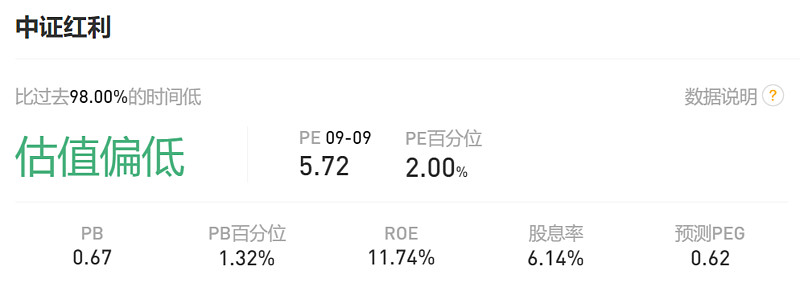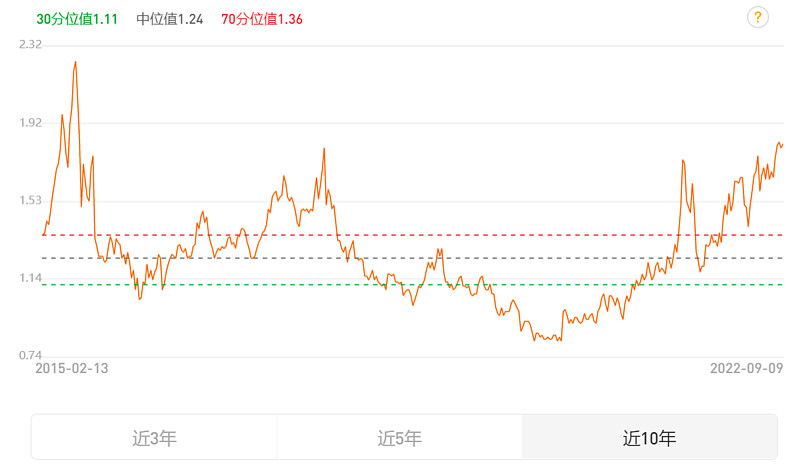Yesterday I talked about dividend ETF funds. Continuing today, the market is volatile and controversial: some people think that A-shares have bottomed out, and then loose money, so it is a bull market; but some people think that A-shares are now moderately valued, if you remove the undervalued banks Insurance, and now the pillar industry real estate is challenged, then A shares will not rise. Therefore, at the moment of great disagreement, the robustness of the dividend is very rare.
But what I want to talk about today is the valuation trap behind the low valuation of the dividend index , which needs attention.
What is the valuation trap? That is to say, things with low valuations may not necessarily rise, and may even fall. The best example is actually the big V’s purchase of Minsheng Bank, which broke the net, and the result is still falling. Another example is some pharmaceutical stocks whose businesses have been heavily exposed to the new crown. Their high performance growth cannot be sustained, so their low valuations are entirely due to emergencies and cannot be sustained, so they will not rise. And now the dividend valuation of CSI is very low.

By analyzing its components, there are indeed certain valuation pitfalls. But I will talk about how to solve this valuation trap.
Yesterday, we mentioned that dividend index funds are generally composed of some sunset industries, including cyclical stocks such as coal, steel, and chemical industry, real estate, banking, building materials, and building decoration related to real estate, and then public utilities such as Yangtze Power, China Telecom, China Telecom, etc. move.
All three sectors are undervalued. Coal-led cyclical stocks are now at a cycle high, and the global economy will recover in 20-21, so the demand for coal as an energy source will increase. Although there are signs of economic recession this year, the Russian-Ukrainian conflict has made energy supply tight, offsetting it. Coal’s high profits put PE very low.
The second category of real estate-related valuations is low, like banks breaking the net, and real estate valuations hitting a new low in N years. The reason behind this is that real estate has changed from an incremental market to a stock market, so the low valuation caused by changes in the valuation logic.
Finally, utilities, because they have no growth potential, have been undervalued. A special case is Yangtze Power. Due to the vigorous development of clean energy this year, its valuation has been raised a little, but most utilities are still lying on the ground. Valuation on the ground.
Then obviously, the valuation logic of the first two has changed. First of all, I am more worried about coal. In fact, the rise of CSI dividends this year is largely due to the cyclicality of coal. Coal was a bull market in 19-22 years, so it pulled up the net value of CSI dividends. But is this sustainable? Obviously, it is more difficult, because coal is now at the high point of the cycle. The subsequent aggressive interest rate hikes by the Federal Reserve to suppress the prices of commodities, and the economic recession to suppress the demand for coal will have an impact on coal prices. Another point is that the valuation of coal is also high from a cyclical point of view. You can’t look at the price-earnings ratio of cyclical stocks, you need to look at the price-to-book ratio. The price-to-book ratio of coal is in a very high position:

So coal is clearly at a cycle high and needs attention.
Valuations of banks and real estate chains have clearly changed. China’s urbanization rate has reached a high level, the speed of real estate development has slowed down, and it is impossible to grow as fast as before, and housing prices are suppressed by housing and non-speculation.
Having said so much, what I want to express is that the low valuation of CSI Dividends has certain traps, and it is not as low as we think. Behind its low valuation is the change in the previous valuation logic, so the previous relatively high valuation cannot be used as a comparison object, that is, the real estate 5 years ago and the current real estate, not a real estate, the essence of their industry has happened Variety. Coal’s words are because of the cycle’s highs.
So the question is can I vote? I think it is possible, as long as you avoid coal, because coal is indeed a proper cycle high, and cyclical stocks themselves are more difficult to control. However, banks and real estate will still usher in a valuation repair, that is, although its valuation logic has changed, it will not be so low. It has not risen for three years. Real estate is supported by the government, and the lower limit will not be particularly low. Real estate itself is a pillar industry, and the industry chain is very long, which has led to the employment of thousands of households, so real estate must be saved. Then when choosing funds or individual stocks, you must pay attention to those real estates, banks, and real estate chains that have national credit endorsements.
Another point is that in the real estate chain, companies that are less affected by real estate, or companies that have a second growth curve, can be selected. Let’s take two examples, Gree Electric and Conch Cement. Gree Electric itself is a leader in the manufacturing industry. Its dividend rate is as high as 5.77%. The new logic is to use its manufacturing advantages in other fields, such as new energy and pre-made dishes. Conch Cement uses photovoltaic power generation to reduce costs and increase efficiency, expand its market share through low prices, and achieve market share growth in the face of real estate recession.
That last bit of utility logic hasn’t changed much. The stocks I am more optimistic about are actually the three examples I cited, Yangtze Power (3.41%), China Telecom (7.63%), and China Mobile (6.10%). The dividend yield is in parentheses. Although Changjiang Power has a low dividend yield, it is clean energy and has a high degree of prosperity. The latter two are tepid, but the dividend yield is very high, far exceeding that of ETFs, and it does not charge management fees like ETFs. The most important thing is that the latter two telecom operators have never been seen in the dividend ETF, which may be due to the short listing time.
As of August 31, the dividend yield of SSE Dividend was 5.97%, and the dividend yield of CSI Dividend was 5.39%. In fact, we can look for varieties of banks, real estate, and public utilities that have a much higher dividend yield than ETFs for investment. This can make up for some of the deficiencies of dividend ETFs. Moreover, stocks with high dividends generally have relatively low prices. For example, many banks sell for a few yuan per share, and people who invest in ETFs can also afford them. Moreover, there are no ETFs for individual stocks that require management fees, so long-term holdings It’s still worth it, but if you buy a single stock, you should buy more varieties, not one monotonous one.
# Lao Si Ji Hard Core Evaluation# # The shock market dividend index has outstanding performance, how to invest# # The collective rise of low-valued sectors, how to borrow the base layout# $ Bonus ETF (SH510880) $ $ CSI Dividend ETF (SH515080) $ $ Shanghai Deep 300ETF(SH510300)$ @Today’s topic
This topic has 4 discussions in Snowball, click to view.
Snowball is an investor’s social network, and smart investors are here.
Click to download Snowball mobile client http://xueqiu.com/xz ]]>
This article is reproduced from: http://xueqiu.com/5760078642/230497019
This site is for inclusion only, and the copyright belongs to the original author.